Welcome To The New Normal
Singapore is just over two weeks into a lockdown. Yes, a lockdown.
To date, Singapore has 6588 cases of infections and 11 deaths. The New Normal here is littered with acronyms: SHN, CB, HBL, LOA, WFH. These tidy terms, devised by our government, and enforced, especially in the past two weeks, with prosecutorial zeal, only tell half the story.
They tell you how your society is going to be regulated during the pandemic. But they don’t tell you how life will be organised behind closed doors. For that, you’ll have to speak to families in lockdown. And in particular, to women.
I single out women raising children because this lockdown has increased the demands made upon them to keep the family chugging along through a crisis.
All of the worlds we occupied that gave us some structure and reprieve, have recently collapsed and folded into each other with a spike in Covid-19 cases. Nuclear families are in lockdown as self-contained units. Some live with grandparents who help babysit children; others care for aging parents, at a time when the elderly are considered to be most vulnerable to contracting and succumbing to the virus.
And everyone is at home. Almost all the time.
Institutions and individuals have disappeared into blocks of time and multiple video-conferencing applications from Zoom to Google Hangouts. Our communities and our lives have been compressed into a 13.5-inch laptop screen, an i-Pad, or the mobile phone.

Women have always tended to carry the mental load. Used and popularised by French comic artist Emma, the term has come to encapsulate all of the work women do, which is unseen and might seem insignificant, but which makes them the home’s multitasking project manager par excellence.
Much of that juggle depends on both individuals and institutions carrying some of the weight. The “village” consists of spouses or partners, grandparents, schools, tutors, sports instructors, extended family members, helpers and more.
In theory, that load should be significantly reduced now because you can’t engage in most activities outside your house. But it hasn’t. Working from home means many are working far more hours than they ought to, while trying to master MOE’s home-based learning initiative (HBL), designed to keep children “in schools” despite school closures.
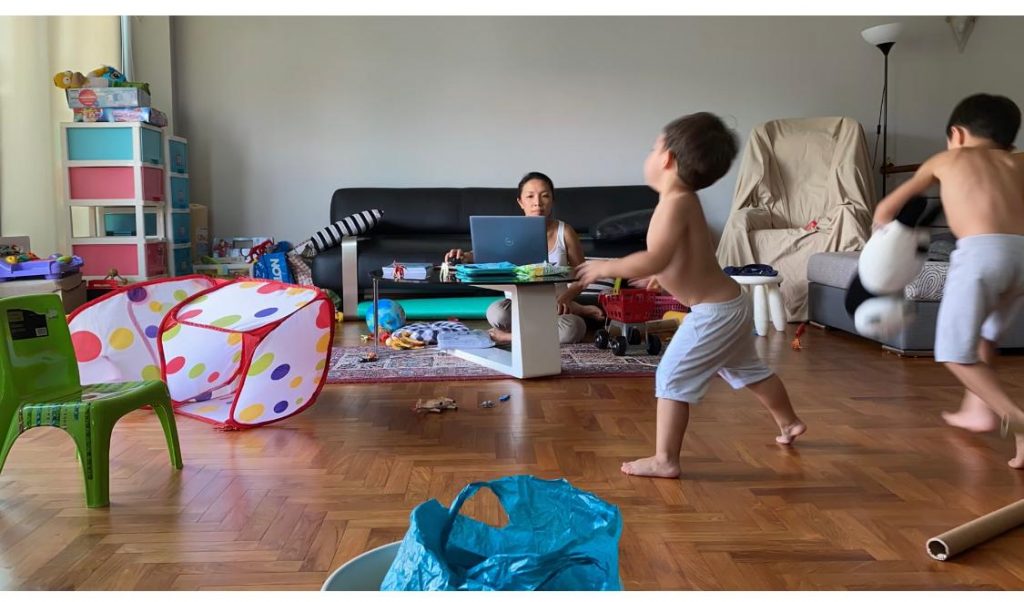
Junice, 39, who works in the sustainable business sector, has two sons aged 3 and 5. The family stays with her parents, and they take turns to manage the boys.
“It has naturally evolved into each adult taking on tasks,” she says, adding, “Although grandparents have taken on a bulk of the cooking and cleaning. Childminding involves a lot of free play and a greater reliance on TV and Youtube Kids. Both are in preschool so there’s much less homework pressure.”
This has happened to my husband and I as well. I’ve tried to get our toddler to do some of the “activities” that her preschool teacher has given us. She dislikes the word “activities”, and has decided structured time belongs in preschool. I’ve given up and I let her free play, while I frantically edit or work on a story draft. If I manage to carve out four hours of work from my day, it feels like a small miracle.
We’re not alone.
Out of 200,000 preschool going children in Singapore, currently only 5 percent are still going to preschool because their parents are in essential services, or are unable to provide alternative care arrangements. The rest are at home.
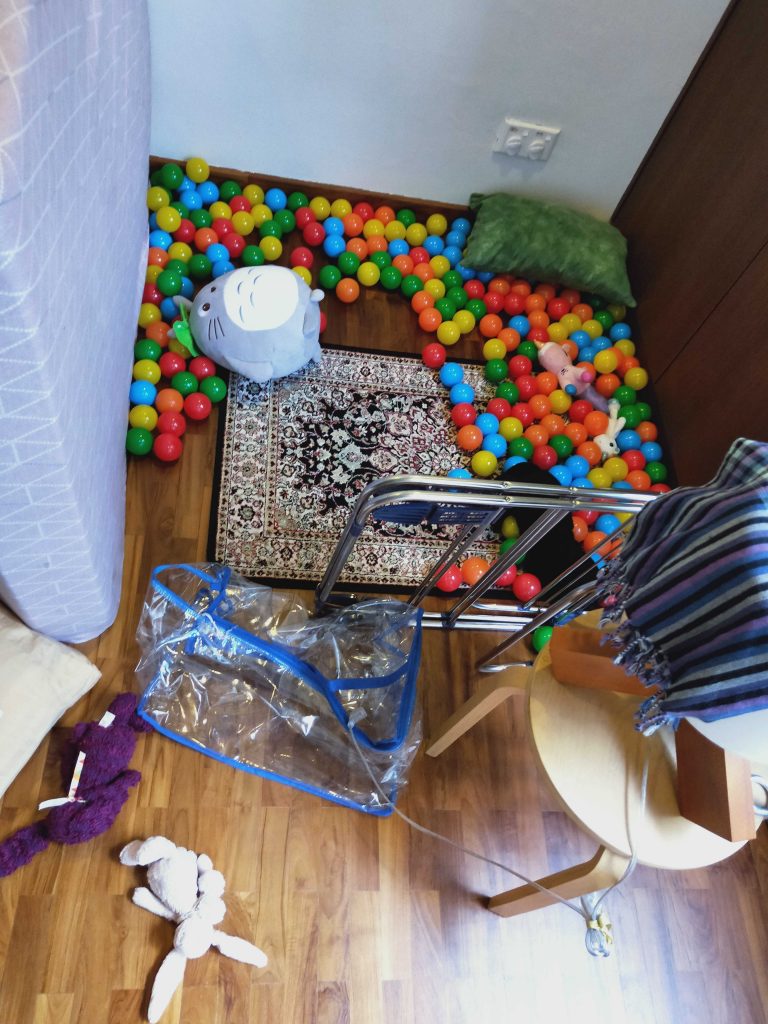
This Is Your Life In Lockdown
Days after schools closed across the country, I reached out to mums to find out how they were doing. There was a flurry of responses that read like haikus of condensed anxiety because every single one was in the midst of acclimating to the multiple interfaces and apps required for HBL, whilst working or managing the home with no help.
“I’m barely surviving, I cannot meet the deadlines …”
“I can only handle one child at a time …”
“I’m not really coping …”
“They can implement a circuit breaker but the poor kids cannot manage the stress of not exercising or exerting themselves …”
“It’s mad … I’m constantly shooing away the kids when I’m in the middle of a meeting and they have questions … this is so much more stressful.”
“I’ve been pulling 15-hour days to pull off homeschooling and a full-time job. #exhausted”
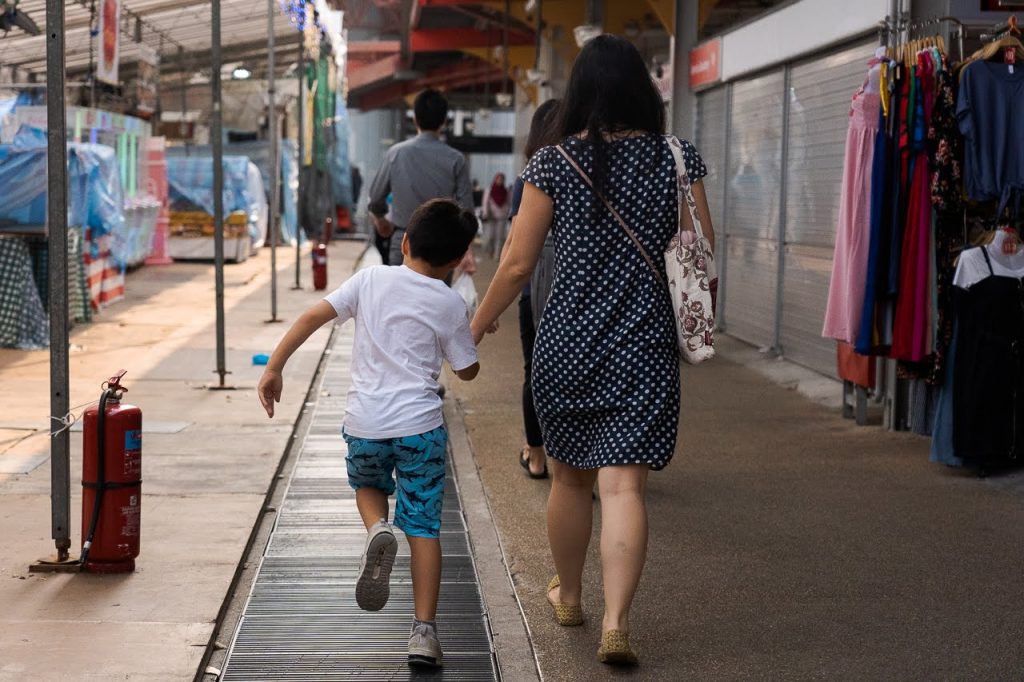
Where have all the men gone? They are at home as well, and many will be running errands, shouldering some of the home-based learning (HBL) classes for their kids, or getting them outdoors for fresh air (with masks on). But for a significant number of women I spoke to, the men have disappeared into their newly outfitted home-offices: a cubby-hole in the corner of a room. A desk installed in the bedroom. A laptop and office supplies on the dining table.
This divergence in approaches to life during a lockdown isn’t a criticism of men. It’s simply further proof that while we’re all being told to adjust our expectations during a time of crisis, we’re also being told to keep up appearances “at work” and to meet our KPIs or work outputs for the quarter, and beyond. For a lot of men, that means doubling down on the task at hand and leaving the myriad duties that have flooded the household to their partners.

“My husband shuts himself in his room and has full working days, with calls and meetings and late night conference calls. It’s like he feels helpless. He needs to do his work. He wants to help me, but he feels unable to. I, on the other hand, am unable to continue as if the pandemic hasn’t disrupted anything.”
And so she marks papers, tries to stay on top of articles she needs to write, and does HBL with her son, who is in primary one, while leaving her 3-year old to play with minimal supervision.
In some instances, the presumption is that the men will simply not be as meticulous.
“I need to give my husband instructions on how to manage HBL,” quips Mrs. Leong, 43, who works in the oil industry.
Without a comprehensive survey of just how families are dividing responsibilities at home and who is leading the HBL programme with their children, it’s hard to conclude that women are most likely to be at the helm. But if they are, that could be driven—for better or for worse—by an almost unconscious presumption on all our parts that women make better teachers.

Does this make it okay that working mothers are having to now play the role of primary school teachers?
For many, it has had a negative impact on their mental well-being.
Nisa, 38, a part-time lecturer with two boys aged 6 and 4, and her husband co-share duties. But it’s still proving to be a challenge.
“Finding the time to do these different things is causing me stress and sometimes even anxiety. I have slowly come to terms with the routine though sometimes when I don’t feel good mentally or physically, it does affect my temperament when I’m guiding my son during HBL.”

But this doesn’t diminish the fact that we’re in unprecedented territory, and that the loss of a sense of control over one’s time and space is genuinely felt.
Hanqing, 37, who runs her own editorial business, and has three children between the ages of 4 and 9, tells me that between scanning and submitting work, troubleshooting IT issues, or accessing the MOE Parents Gateway to make sure the tasks for the day are done, there is no time left to attend to her own work.
“No ‘me-time’ is an understatement but I try to cope by getting a HIIT workout in the afternoon as well as catching up on some reading at night.”
If any more variables are added into the mix, the current challenges become too much to bear.
“One is going through a divorce, works in essential services and has two kids in preschool. Another is already divorced and has to split one laptop between herself and two kids who are at different levels in school,” he tells me.
He’s trying to figure out how to offer support, or draw attention to the fact that parents are struggling to adapt.
Rosemary, 41, a preschool teacher, with two sons (and who is separated from her husband), has continued working throughout the lockdown, to teach children whose families cannot afford home-care or who work in essential services.
In a voice recorded message, she tells me it has been incredibly difficult.
“We’re going through very tough times. The day the schools closed, they kept the teachers back. I teach at the kindergarten level, so I fill in for people who cannot teach. I’m struggling to cope. I have two sons who cannot be controlled and who don’t have a father figure at home. I asked for limited care for one of the boys to continue primary school. But I was refused. They gave me an i-Pad instead. So now they’re just on devices, or watch TV.”
The Quest for Productivity At All Costs
Scattered art supplies, multiple screens, dining tables turned into work hubs, the chaotic pantomime of half-dressed kids running around throwing their toys across the room, while a harried mum furrows her brow and tries to answer an email; the dad is in another room, trying to remain professional during a work call on Zoom.
This is emblematic of life in lockdown.
Everyone is adjusting. As the second week of HBL and WFH ends, and another begins again, people have begun finding a workable rhythm, however faltering, and they’re doing what they can. Many recognise that all of a sudden, they have more time—however chaotic and jam packed that time is—with their children.
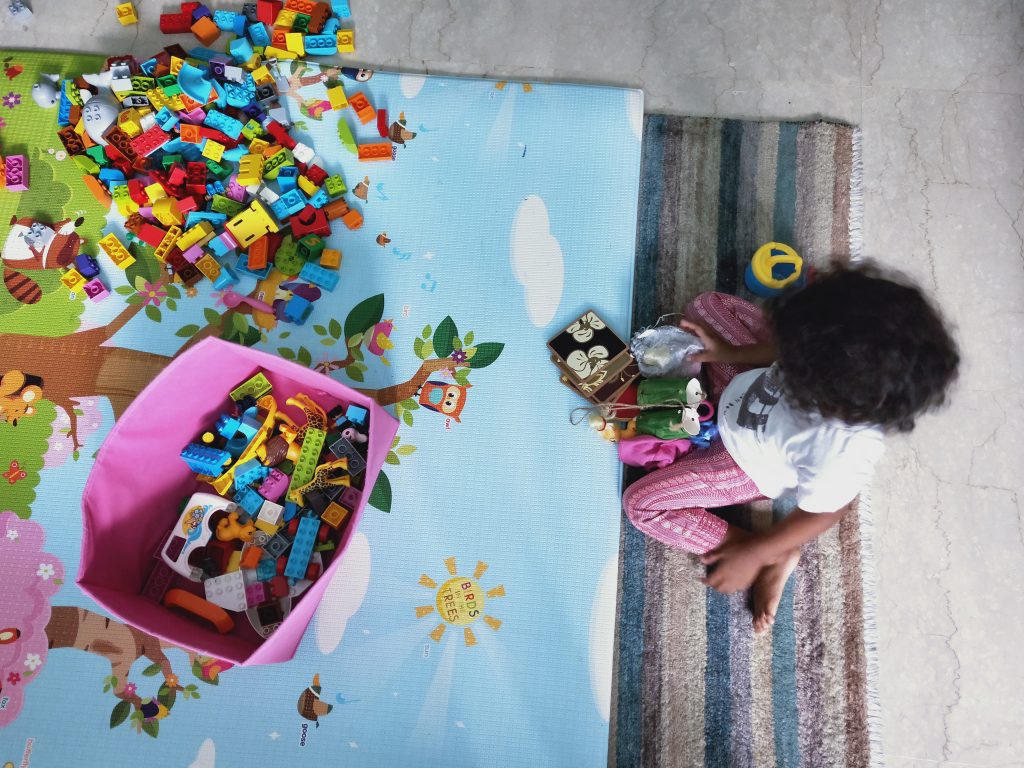
“It’s been a tough, rough start … and unfortunately my workload is the same, and at times heavier depending on the situation. But we’re getting the hang of things and we’re becoming more organised with their schedules. It has given us more time to bond with the kids, and to teach them things beyond what they learn in school. Though tough, we’re loving every minute of it. Until they turn into monsters!”
Mrs. Leong echoes the sentiment. “I do treasure this one month where we have no outside commitments and all the time to huddle and bond as a family.”
Nonetheless, themes have emerged.
First, HBL and its impact: both parents (largely mums) and children have had very little time to adapt to HBL. It was trial-run briefly for a day before being rolled out overnight. From Google Meet, Zoom, to the Student Learning System, MOE Parents Gateway and more, the assumption seems to be that it’s easy to toggle between multiple portals and applications.
Berna, 40, a stay-at-home mum who has been going back and forth between facilitating activities for her two daughters, tells me she has tried to make it all as fun as possible, but worries that MOE isn’t aware of how difficult it is for the children and mums.

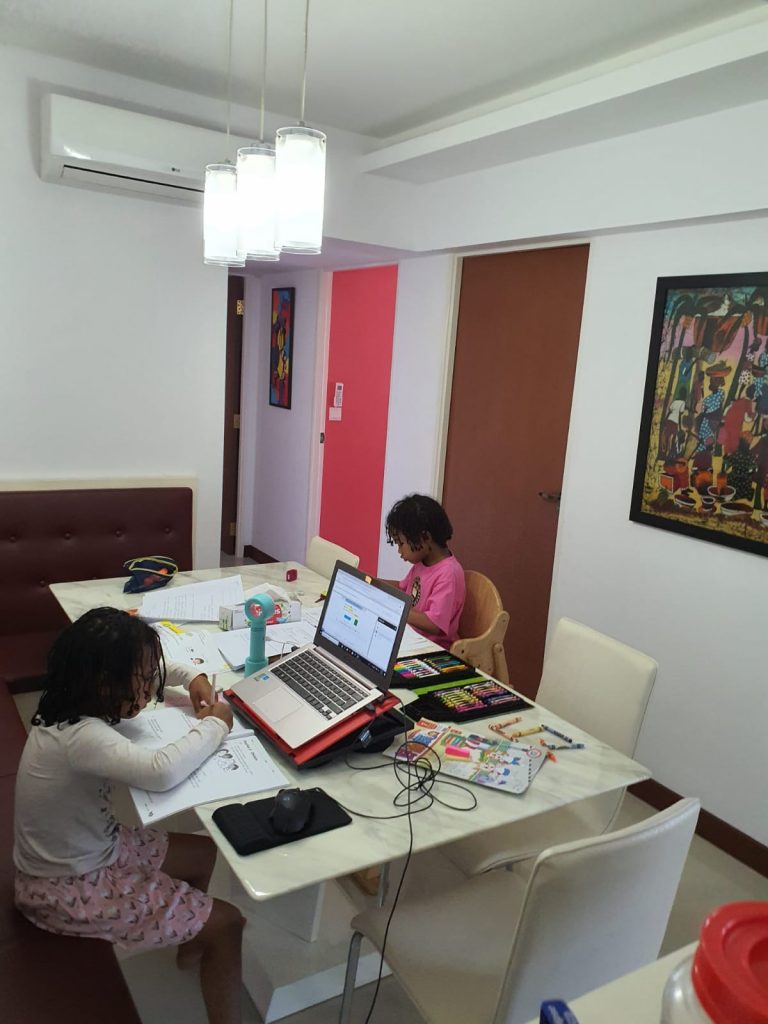
If the pandemic has revealed one thing in this regard, it’s that we’ve got some way to go to achieve digital literacy and close the digital divide across all segments of society.
Second, I didn’t get any responses from working mothers telling me that their workload had been reduced. If they’re freelancers, they’ve simply cut back taking on work. If they run their own business, they’ve put things on hold (with all of the risks that entails).
And pointedly, their husbands or partners are working as hard, if not harder than before the lockdown. The juggle has become overwhelming for families.

Nithya shares this with me during one conversation. “I’m not even going to get into what it’s doing to my mental health—without or with kids. That’s been my response to the pandemic. I’m anxious, and that anxiety has more to do with crumbling social institutions than the health scare. In the midst of this, why is Singapore still insisting on such high levels of productivity?”
And finally, there are the children themselves. They too, have had to transition into a whole new pedagogical reality, but their workload hasn’t necessarily been reduced while they get used to life during a pandemic.
“My daughter’s teacher called on Monday and I talked about the workload. She feels for her students but said MOE wants these standards to be met regardless. Teachers are trying to explain how challenging it is for lower primary children to engage in online learning, as well as meeting the timelines of assignments, but MOE wouldn’t budge,” Berna adds.
So, here’s what I wonder: are institutions (workplaces and schools) really expecting parents to perform at optimal levels? Are we still in a state of denial about the fact that our idea of what constitutes “productivity” needs to be radically altered during this lockdown (and possibly thereafter)? Because we cannot possibly be expected to continue carrying the mental load, in a new form.
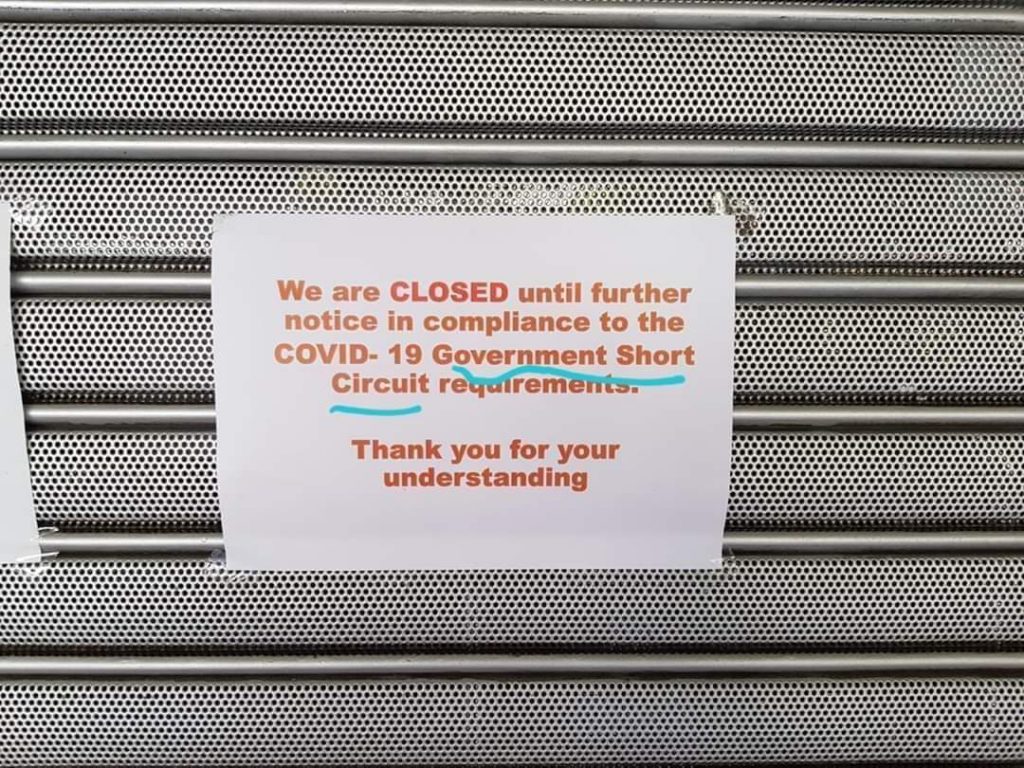
I jest. But for many women and their families, humour has become acerbic of-late, even as they find ways to remain optimistic and rise to the occasion during this crisis.
What families need right now are institutions which demonstrate empathy and patience, as they adjust to this new reality; not metaphors that remind them of their children’s school assignments.
Are you struggling with the increased mental load? Let us know at community@ricemedia.co.






